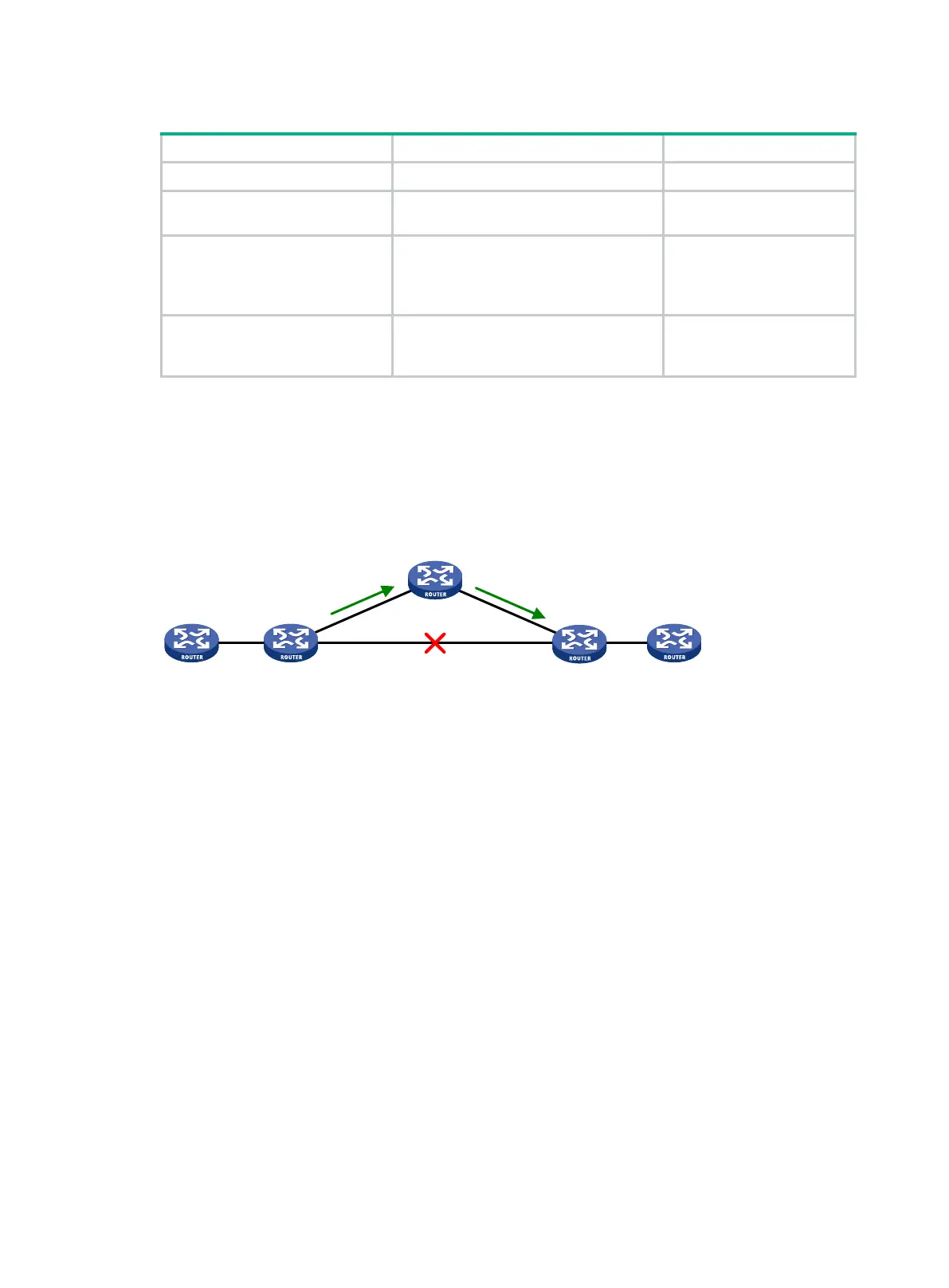163
To configure BFD for IS-IS:
1. Enter system view.
N/A
2. Enter interface view.
interface
interface-type
interface-number
N/A
3. Enable IS-IS on an interface.
isis enable
[ process-id ] N/A
4. Enable BFD on an IS-IS
interface.
isis bfd enable
By default, an IS-IS
interface is not enabled
with BFD.
Configuring IS-IS FRR
A link or router failure on a path can cause packet loss and routing loop. IS-IS FRR enables fast
rerouting to minimize the failover time.
Figure 41 Network diagram for IS-IS FRR
In Figure 41, after you enable FRR on Router B, IS-IS automatically calculates or designates a
backup next hop when a link failure is detected. In this way, packets are directed to the backup next
hop to reduce traffic recovery time. Meanwhile, IS-IS calculates the shortest path based on the new
network topology, and forwards packets over the path after network convergence.
You can assign a backup next hop for IS-IS FRR through the following ways:
• Enable IS-IS FRR to calculate a backup next hop through Loop Free Alternate (LFA)
calculation.
• Designate a backup next hop with a routing policy for routes matching specific criteria.
Configuration prerequisites
Before you configure IS-IS FRR, complete the following tasks:
• Configure IP addresses for interfaces to ensure IP connectivity between neighboring nodes.
• Enable IS-IS.
Configuration guidelines
The LFA calculation of FRR and that of TE are mutually exclusive.
Router A Router B Router E
Backup nexthop: Router C
Nexthop: Router D

